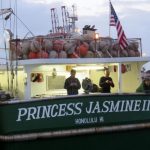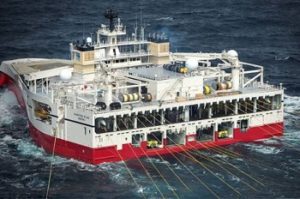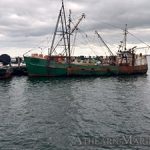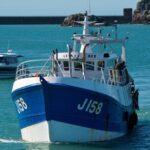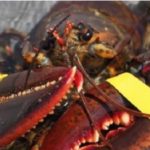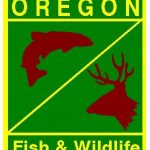Tag Archives: Alaska salmon.
Alaska’s total commercial salmon harvest this year was ultra-low in both quantity and value
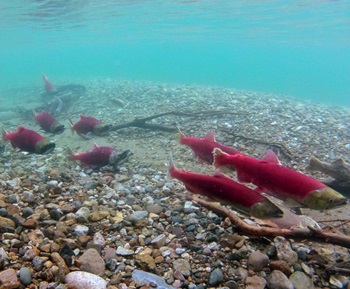 The number of Alaska salmon harvested by commercial fishers was the third smallest since all-species records began in 1985, and the value to harvesters, when adjusted for inflation, was the lowest reported since 1975, state officials said. Additionally, the 450 million pounds of salmon that the total harvest contained was the lowest on record, officials said. The totals come from a preliminary recap of this year’s salmon season issued on Nov. 18 by the Alaska Department of Fish and Game. Only 101.2 million salmon were harvested this year, less than half the 232.2 million harvested last year, the department reported. The money paid to fishers for their catches, known as ex-vessel value, totaled $304 million, down from $398 million last year, the department said, In the Bristol Bay region, site of the world’s biggest sockeye runs, this year’s return was well above projections and 7% higher than the 20-year average, though the amount commercially harvested was a bit below the average. more, >>CLICK TO READ<< 16:09
The number of Alaska salmon harvested by commercial fishers was the third smallest since all-species records began in 1985, and the value to harvesters, when adjusted for inflation, was the lowest reported since 1975, state officials said. Additionally, the 450 million pounds of salmon that the total harvest contained was the lowest on record, officials said. The totals come from a preliminary recap of this year’s salmon season issued on Nov. 18 by the Alaska Department of Fish and Game. Only 101.2 million salmon were harvested this year, less than half the 232.2 million harvested last year, the department reported. The money paid to fishers for their catches, known as ex-vessel value, totaled $304 million, down from $398 million last year, the department said, In the Bristol Bay region, site of the world’s biggest sockeye runs, this year’s return was well above projections and 7% higher than the 20-year average, though the amount commercially harvested was a bit below the average. more, >>CLICK TO READ<< 16:09
Copper River harvest edges slowly towards1.4M
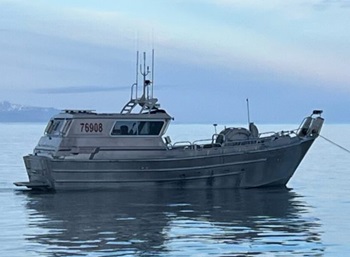 Harvests of Copper River District salmon edged up slightly to 1.4 million fish as of Tuesday, July 23, while for Prince William Sound overall the catch delivered to processors came to over 7 million fish, as the fishery slowed. Alaska Department of Fish and Game biologist Jeremy Botz in Cordova noted that fishing for coho salmon will pick up in mid-August. Meanwhile, Botz said, the sockeye harvest came in above forecast while the chum and likely Chinook catch would be below forecast. Consumers still hoping to purchase those prized Copper River reds likely won’t find them at their local seafood shops, but via the internet in a wide range of prices, some of which have not declined since the summer salmon season began. more, >>CLICK TO READ<< 11:40
Harvests of Copper River District salmon edged up slightly to 1.4 million fish as of Tuesday, July 23, while for Prince William Sound overall the catch delivered to processors came to over 7 million fish, as the fishery slowed. Alaska Department of Fish and Game biologist Jeremy Botz in Cordova noted that fishing for coho salmon will pick up in mid-August. Meanwhile, Botz said, the sockeye harvest came in above forecast while the chum and likely Chinook catch would be below forecast. Consumers still hoping to purchase those prized Copper River reds likely won’t find them at their local seafood shops, but via the internet in a wide range of prices, some of which have not declined since the summer salmon season began. more, >>CLICK TO READ<< 11:40
Task force report identifies research needs to better understand Alaska salmon problems
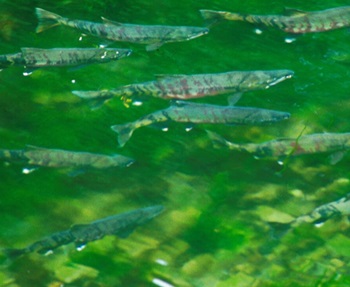 Fishery managers overseeing Alaska’s faltering salmon runs should be able to rely on a more comprehensive and holistic approach to science that considers all habitat, from the middle of the ocean to freshwater spawning streams far inland, according to a task force report on salmon research needs. The report was issued last week by the Alaska Salmon Research Task Force, a group established through a 2022 act of Congress to identify knowledge gaps and research needs. The task force comprises close to 20 members and includes scientists, fishers, Indigenous community representatives and agency managers. In addition to those members, the effort included a special 42-member working group focused on salmon problems in the Yukon and Kuskokwim River drainages. The report follows a year’s worth of meetings and consultations. more, >>CLICK TO READ<< 17:34
Fishery managers overseeing Alaska’s faltering salmon runs should be able to rely on a more comprehensive and holistic approach to science that considers all habitat, from the middle of the ocean to freshwater spawning streams far inland, according to a task force report on salmon research needs. The report was issued last week by the Alaska Salmon Research Task Force, a group established through a 2022 act of Congress to identify knowledge gaps and research needs. The task force comprises close to 20 members and includes scientists, fishers, Indigenous community representatives and agency managers. In addition to those members, the effort included a special 42-member working group focused on salmon problems in the Yukon and Kuskokwim River drainages. The report follows a year’s worth of meetings and consultations. more, >>CLICK TO READ<< 17:34
Market conditions continue to pressure seafood processors and fishermen
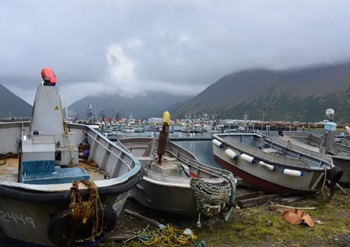 Consumers think of seafood as a premium purchase, which is not a good image when household budgets are tight and shoppers are worried about inflation. “The problem is not the fish,” said Jeremy Woodrow, executive director of the Alaska Seafood Marketing Institue. “The challenge is in the global marketplace.” Woodrow in February called the 2023 market for Alaska salmon “rock bottom” with low prices and weak demand, though maybe the industry was coming off that rocky bottom, he said then. Still, the pain is not gone. “A lot of buyers are barely holding on,” Woodrow said. “Our processors lost a lot of money the past year or two.” more, >>CLICK TO READ<< 09:40
Consumers think of seafood as a premium purchase, which is not a good image when household budgets are tight and shoppers are worried about inflation. “The problem is not the fish,” said Jeremy Woodrow, executive director of the Alaska Seafood Marketing Institue. “The challenge is in the global marketplace.” Woodrow in February called the 2023 market for Alaska salmon “rock bottom” with low prices and weak demand, though maybe the industry was coming off that rocky bottom, he said then. Still, the pain is not gone. “A lot of buyers are barely holding on,” Woodrow said. “Our processors lost a lot of money the past year or two.” more, >>CLICK TO READ<< 09:40
Fear, legacy and the Alaska seafood industry
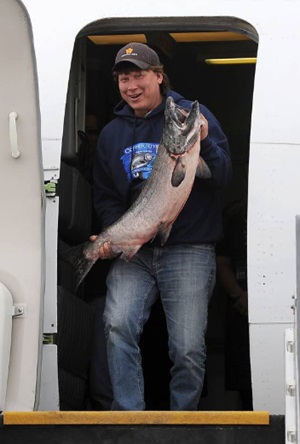 My journey began from a deep-rooted fear — the fear of watching a livelihood, passed through generations of commercial fishermen, slip through my fingers. Three decades ago, I was a young Copper River fisherman caught in the middle of a market crash. Farmed salmon had just entered the U.S., tanking prices for wild Alaska salmon. As a young commercial fisherman, fiercely proud of the salmon I caught, this shift turned my world upside down. At that moment, I made a pivotal decision — band with three other fishermen, three other fishermen, and wage a battle for the premium markets I felt Alaska salmon rightfully deserved. Spoiler alert: It’s been three decades, and we’re still fighting every day to compete. With experience, I’ve learned that my competition extends beyond other seafood; it’s beef, poultry and other proteins that occupy the “center of the plate.” In the face of market crises, conflicts, recessions, political turmoil and economic challenges, the burden I bear today mirrors the weight I carried in my 20s, but the challenges are now bigger and more complex. more, >>CLICK TO READ<< 21:41
My journey began from a deep-rooted fear — the fear of watching a livelihood, passed through generations of commercial fishermen, slip through my fingers. Three decades ago, I was a young Copper River fisherman caught in the middle of a market crash. Farmed salmon had just entered the U.S., tanking prices for wild Alaska salmon. As a young commercial fisherman, fiercely proud of the salmon I caught, this shift turned my world upside down. At that moment, I made a pivotal decision — band with three other fishermen, three other fishermen, and wage a battle for the premium markets I felt Alaska salmon rightfully deserved. Spoiler alert: It’s been three decades, and we’re still fighting every day to compete. With experience, I’ve learned that my competition extends beyond other seafood; it’s beef, poultry and other proteins that occupy the “center of the plate.” In the face of market crises, conflicts, recessions, political turmoil and economic challenges, the burden I bear today mirrors the weight I carried in my 20s, but the challenges are now bigger and more complex. more, >>CLICK TO READ<< 21:41
A business in crisis
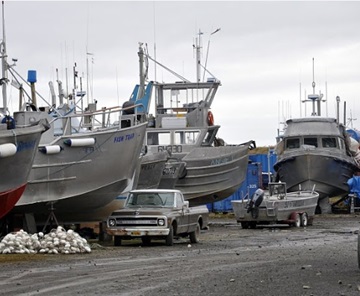 After years of choking on record runs of Bristol Bay sockeye salmon and near-record runs of heavily farmed, low-value pink salmon, the Alaska fishing industry is in chaos with processors now pleading for more government subsidies and coddled commercial fishermen demanding yet more disaster aid. One could blame global warming, which has led to historically unprecedented harvests of Alaska salmon despite whatever nonsense to the contrary the mainstream media might have reported, but the industry’s problems are far more complex than just trying to sell high-priced seafood in Western markets where the sales of animal protein are dominated by chicken, beef and pork. Some of the industry’s issues here are rooted in its long history. For most of the years after commercial fishing began in Alaska in the late 1800s, the business dealt almost wholly in canned salmon. >>click to read<< 08:41
After years of choking on record runs of Bristol Bay sockeye salmon and near-record runs of heavily farmed, low-value pink salmon, the Alaska fishing industry is in chaos with processors now pleading for more government subsidies and coddled commercial fishermen demanding yet more disaster aid. One could blame global warming, which has led to historically unprecedented harvests of Alaska salmon despite whatever nonsense to the contrary the mainstream media might have reported, but the industry’s problems are far more complex than just trying to sell high-priced seafood in Western markets where the sales of animal protein are dominated by chicken, beef and pork. Some of the industry’s issues here are rooted in its long history. For most of the years after commercial fishing began in Alaska in the late 1800s, the business dealt almost wholly in canned salmon. >>click to read<< 08:41
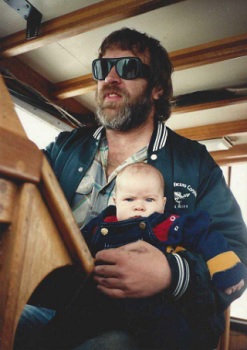
Net migration: Young commercial fishermen ship out of Cook Inlet
The Cook Inlet salmon fishery was once an economic engine for Kenai. But the fishing there is no longer lucrative. Many fishermen with deep ties to the inlet are retiring, or moving elsewhere. The F/V Nedra E is smaller than the other boats bobbing at the dock in Naknek. Thor Evenson didn’t have Bristol Bay in mind when he designed the boat for his parents, Nikiski homesteaders Jim and Nedra Evenson. Until last year, she’s been a Cook Inlet boat, captained by Jim, then his nephew, and now his grandson, 32-year-old Taylor Evenson. Last year, Taylor couldn’t put it off any longer. So with the help of the boat’s original builder, Kevin Morin of Kasilof, he gutted everything behind the cabin, chopped several inches off bow and stern, and installed a brand new deck, to bring the Nedra E in line with Bristol Bay standards. >click to read< 07:50
Alaska salmon season a success in global market
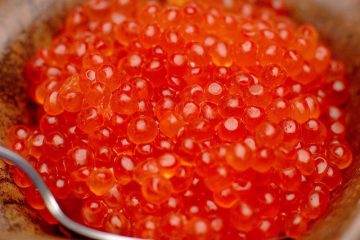 It was a generally good salmon season for Alaska, except for one species. “It was a disastrous year for chinook harvest.” That’s Andy Wink, a seafood economist with the consulting firm McDowell Group. Wink says while king salmon may be the most famous salmon species among Alaskans, it also makes up the lowest total value of all the different commercial salmon species. “Sockeye, pink salmon, chum salmon, those are the species that for the commercial fleet really move the needle in terms of total value.” click here to read the story 19:25
It was a generally good salmon season for Alaska, except for one species. “It was a disastrous year for chinook harvest.” That’s Andy Wink, a seafood economist with the consulting firm McDowell Group. Wink says while king salmon may be the most famous salmon species among Alaskans, it also makes up the lowest total value of all the different commercial salmon species. “Sockeye, pink salmon, chum salmon, those are the species that for the commercial fleet really move the needle in terms of total value.” click here to read the story 19:25
Permit values plummet for Alaska salmon
 Fire sale salmon prices last year and a dim outlook ahead have pushed down the value of fishing permits. A lot of people had disastrous salmon seasons last year, whether it was drift gillnet, permits or seine permits have all declined across the board fairly dramatically. Doug Bowen runs Alaska Boats and Permits in Homer. At Alaska’s bellwether fishery at Bristol Bay drift gillnet permits have dropped into the $90,000 range down from $175,000 last spring. And that may have been the bottom, they seem to have come up a bit – firming up at around $97-$98,000 is where they are today. Audio, Read the rest here 18:58
Fire sale salmon prices last year and a dim outlook ahead have pushed down the value of fishing permits. A lot of people had disastrous salmon seasons last year, whether it was drift gillnet, permits or seine permits have all declined across the board fairly dramatically. Doug Bowen runs Alaska Boats and Permits in Homer. At Alaska’s bellwether fishery at Bristol Bay drift gillnet permits have dropped into the $90,000 range down from $175,000 last spring. And that may have been the bottom, they seem to have come up a bit – firming up at around $97-$98,000 is where they are today. Audio, Read the rest here 18:58
Sensible decision: Walmart agrees to sell Alaska salmon after all – So do we let them off the hook? or beat on ’em?!!
A controversy about labeling Alaska salmon appears to be headed toward a resolution with a sensible decision by Walmart to not reject the sustainable fish supply from the 49th state ![]() more@newsminer
more@newsminer
DEAR JOHN 2.0: Will “concerns” re. hatchery salmon lead to ‘loss of political support’ in Alaska for the ‘wild’/‘enhancement’ strategy?
An open letter to John Sackton, Editor of Seafood.com By Bertrand Charron, Editor of SeafoodIntelligence.com, Dear John, I believe it is high time – since my first ‘Dear John’ editorial of February 2012 – for a ‘Dear John 2.0’, as two of your well-articulated video comments during the past week do warrant praises and rebuttals of sorts continued@seafoodinteligence.com Lots of links, lots of information here. A lot to think about.
From the Deckboss – A salmon summit in Seattle
 For a long while, Alaska and the MSC seemed to be happy partners.
For a long while, Alaska and the MSC seemed to be happy partners.
In recent years, however, many players in the Alaska seafood industry have become disenchanted with the MSC, for a variety of reasons.
This also goes for state officials, who apparently aren’t too enthused about current efforts to keep MSC certification going.
A Seattle-based fishing group, the Purse Seine Vessel Owners’ Association, is seeking renewal of the MSC label on behalf of seven Alaska salmon processors led by Sitka-based Silver Bay Seafoods.

































